Nestled within the vibrant tapestry of Hanoi’s Old Quarter, Hang Bac Street is not just a thoroughfare; it serves as a living museum of Vietnam’s rich heritage, particularly its exceptional silver craftsmanship. Renowned for its artisanal silver work, this bustling street encapsulates the essence of Hanoi’s cultural identity through its unique blend of history, artistry, culinary delights, and shopping experiences.
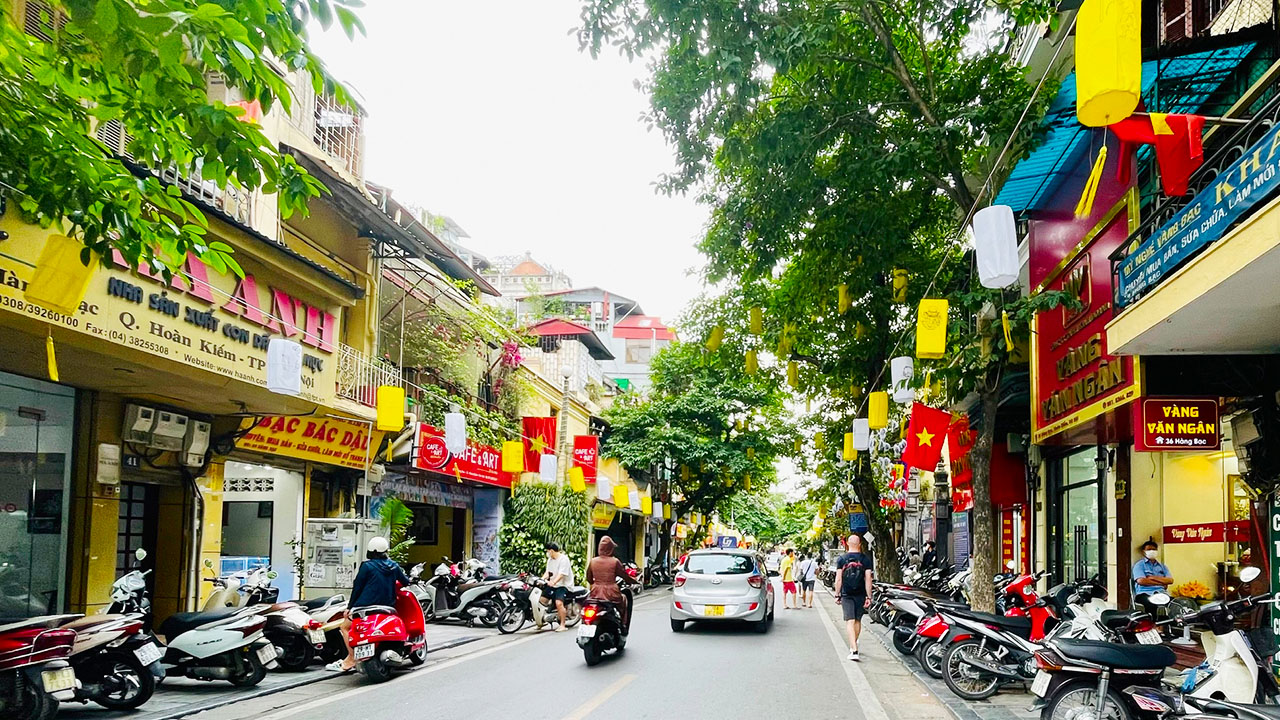
Visitors to Hang Bac Street are treated to an immersive experience, where the echoes of the past resonate through the clang of tools in silver workshops, the vivid colors of traditional handicrafts, and the tantalizing aromas wafting from nearby eateries. In this article, we will delve into the significance of silver craftsmanship, explore the current trends in jewelry, discover notable shops, and uncover the various cultural, culinary, and shopping experiences available on Hang Bac Street.
The Significance of Silver Craft in Hang Bac
Silver craftsmanship on Hang Bac Street stands as a testament to Vietnam’s rich cultural heritage and the skilled artisans who have dedicated their lives to this craft. Over the centuries, the street has evolved into a cornerstone of the silver trade, where intricate designs and time-honored techniques have been passed down from generation to generation. The importance of silver craft goes beyond its aesthetic appeal; it embodies the identity, traditions, and socio-economic fabric of the local community.
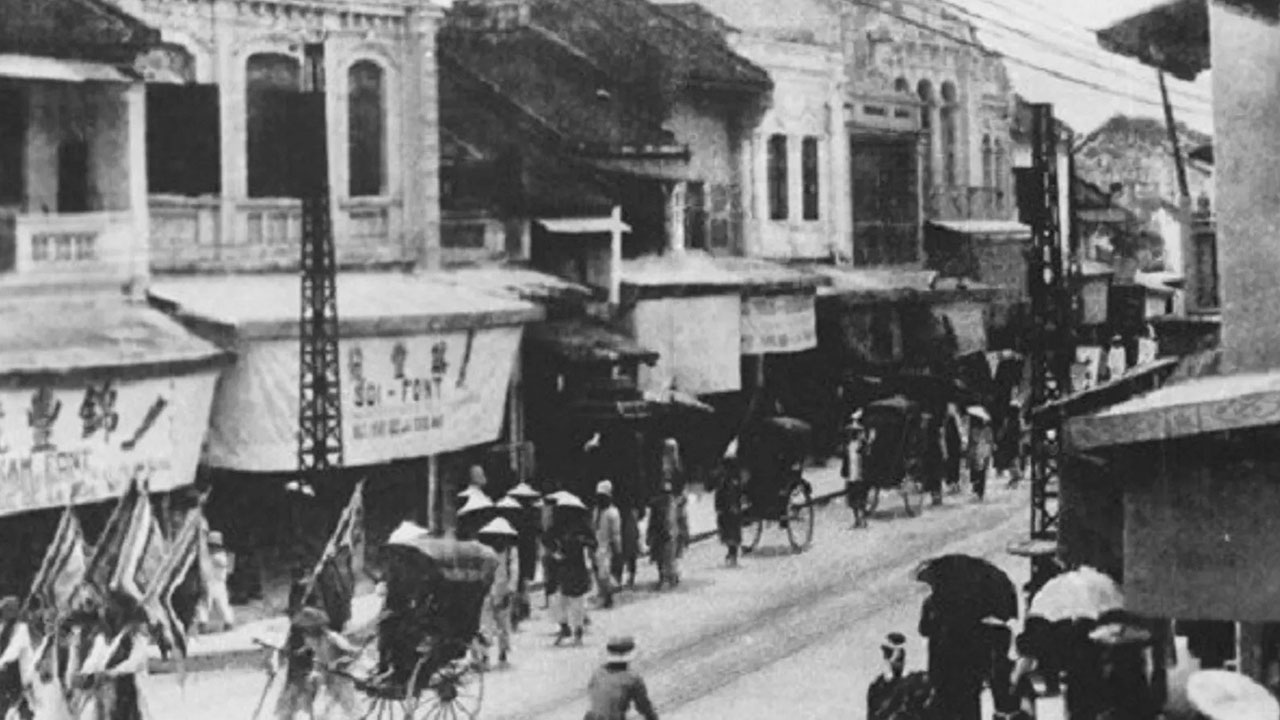
Historically, the origins of silver craftsmanship in Hang Bac can be traced back to the 13th century, and the street was officially recognized for its silver trade in 1945. The Le Dynasty marked the height of silver making, as skilled silversmiths flocked to the area, turning Hang Bac into a dynamic hub of craftsmanship. The craftsmanship that has developed here is characterized by a unique blend of artistry and functionality, leaving an indelible mark on the landscape of Vietnamese culture. Items made include not only jewelry but also religious artifacts and ceremonial pieces, each meticulously crafted to reflect the values and aesthetics of the time.
In contemporary society, the significance of silver craftsmanship is reaffirmed through its adaptation to modern trends. Artisans are now integrating contemporary designs and materials, elevating traditional pieces into fashionable statements that resonate with both local and international markets. This dynamic evolution ensures that the craft remains relevant and continues to thrive. Thus, Hang Bac Street does not merely represent a segment of Hanoi’s history; it symbolizes the ongoing story of cultural resilience and ingenuity.
Historical Roots of Silver Craftsmanship
Delving deeper into the historical roots of silver craftsmanship on Hang Bac Street reveals a narrative that intertwines with the broader context of Vietnamese history. The street’s name translates to “Silver Street,” a reflection of its enduring association with this precious metal. The establishment of Hang Bac as a silver trade area originated from the early 13th century, thriving particularly during the Le Dynasty (1428-1789). It was during this vibrant period of Vietnamese history that the area’s craftsmen honed their skills, producing exquisite silver goods that were highly sought after across the region.
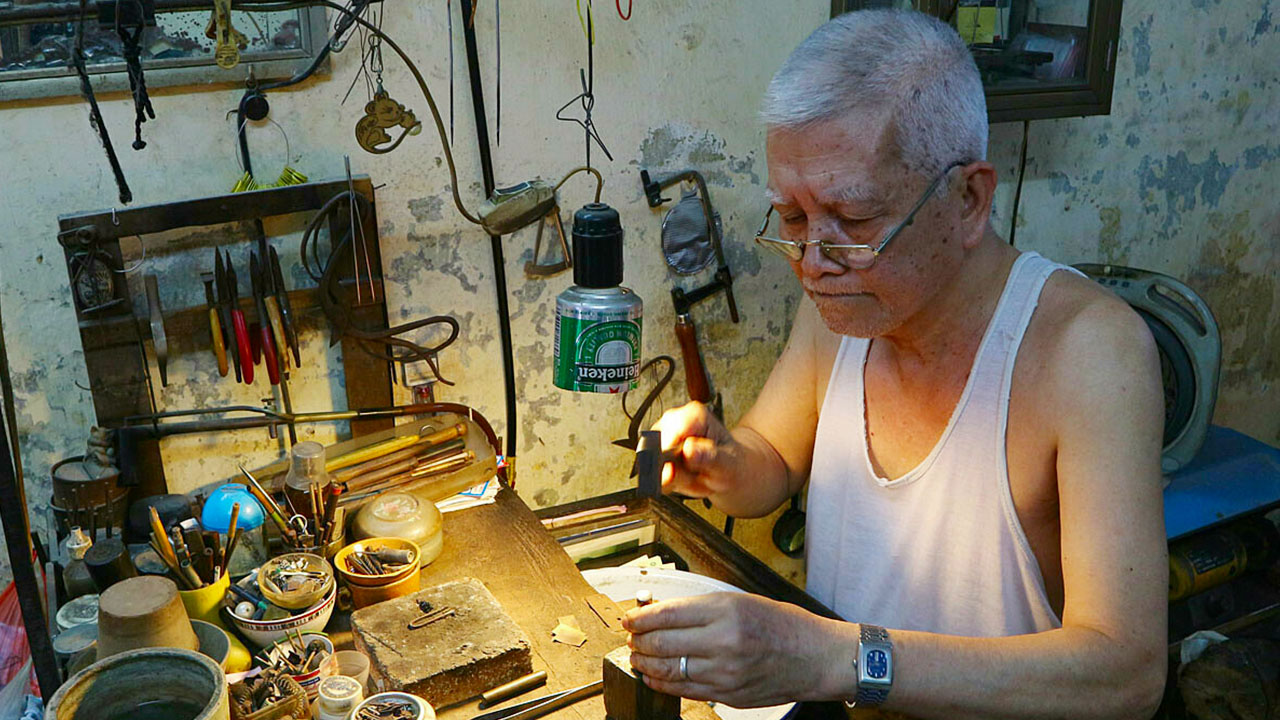
As a vital artery of trade, Hang Bac Street gained notoriety for its ability to produce both simple and intricate silverwork. Over time, local artisans developed distinctive techniques that were influenced by various historical factors, including the cultural exchanges that stemmed from trade routes that connected Vietnam to neighboring countries. The street flourished under the acclaim of its artisans, who were revered for their abilities to transform raw silver into ornate jewelry and practical items intertwined with spiritual significance.
Today, this historical legacy is immortalized within establishments like the Kim Ngan Temple, a sanctuary dedicated to Hien Vien, the legendary founder of silver crafting. This temple not only serves as a spiritual haven for practitioners but also nurtures a community centered around this age-old tradition. It hosts various rituals conducted by local artisans, who engage in ceremonial practices to honor their ancestors and seek blessings for their craft. As you stroll along Hang Bac Street, the blend of history and present-day vitality creates a palpable energy that captivates visitors, inviting them to reflect on the stories held within each crafted piece of silver.
Current Trends in Silver Jewelry
In today’s fast-paced fashion environment, Hang Bac Street stands at the forefront of evolving trends in silver jewelry. Modern consumers are showing a preference for pieces that combine traditional craftsmanship with contemporary designs, a melding that artisans have embraced wholeheartedly. This fusion allows artisans to express creativity while preserving the rich techniques passed down through the generations. The current silver jewelry market on Hang Bac is characterized by unique, bespoke offerings that resonate particularly with younger consumers eager for items that tell their own stories.

Many artisans now offer custom-made pieces, allowing customers to engage directly in the design process. This trend caters to a growing desire for personalization in jewelry, empowering customers to own unique items tailored to their preferences. For example, customers can request silver jewelry adorned with symbols significant to Vietnamese culture, like the Vietnamese dragon or lotus flowers, which further deepens their connection to their heritage.
Additionally, there is an increasing emphasis on sustainability and ethical sourcing in the silver craftsmanship community. More artisans are opting for ethically mined materials, reflecting a growing global consciousness around sustainability and responsible production. This trend is appealing to a more socially aware demographic that prioritizes environmentally friendly practices, thereby creating a shift towards sustainable jewelry in the local market.
In summary, Hang Bac Street exemplifies how traditional craftsmanship can adapt and thrive in a contemporary context. With a blend of innovation, personalization, and ethical practices, the silver jewelry produced here not only encapsulates the artistry of its makers but also resonates with the values of today’s conscientious consumers.
Notable Silver Shops on Hang Bac Street
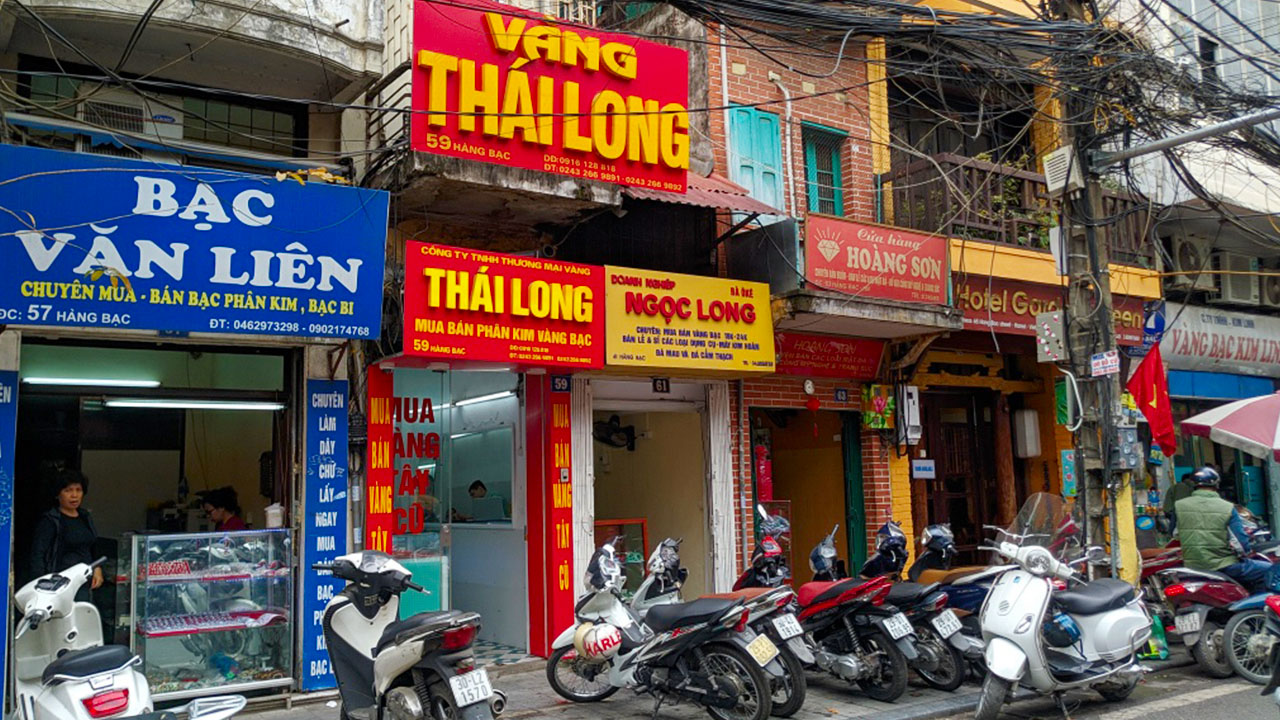
When venturing down Hang Bac Street, visitors will encounter a plethora of shops that showcase the talent and creativity of local artisans. Each shop tells a unique story through its products, making the shopping experience both enjoyable and educational. Here is a list of some notable silver shops you should not miss:
- Silversmith A: Renowned for its custom-made jewelry, this shop offers an impressive selection of handcrafted pieces. Visitors can witness artisans at work, crafting unique designs while providing personalized service to create one-of-a-kind items.
- Silver King: A family-owned business with a reputation that spans generations. Silver King specializes in traditional Vietnamese designs, particularly ornate necklaces and rings that showcase the elegance of Vietnamese artistry.
- Nguyen Silver Handicrafts: This shop stands out for its innovative designs that blend modern aesthetics with traditional craftsmanship. Each piece tells a story of heritage, making it a fantastic stop for those looking to own a unique piece of jewelry.
- Thang Long Silvercraft: Situated at the heart of Hang Bac, this shop features a rich array of intricately designed silver products, including both practical and decorative items. Their commitment to quality and craftsmanship is evident in every product.
- Golden Dragon Jewelry: A must-visit for those seeking highly polished pieces with intricate engravings. Known for its attention to detail, this shop also provides jewelry-making courses for those interested in delving into the craft themselves.
Shopping on Hang Bac Street is more than just a retail experience; it’s an opportunity to engage with the artisans and learn about the history and spirit woven into each piece of jewelry. The interactive shopping experience enhances your understanding of the dedication and artistry that defines Hang Bac as a prominent destination for silver craftsmanship.
Cultural Attractions Along Hang Bac Street
Aside from its renown for silver craftsmanship, Hang Bac Street is also dotted with cultural landmarks that highlight the rich heritage of Hanoi. One such landmark is the Kim Ngan Temple, a significant spiritual site that attracts visitors and worshippers alike. Built in the 18th century, Kim Ngan Temple is dedicated to Hien Vien, the patron saint of gold and silver artisans. The temple itself is a beautiful example of traditional Vietnamese architecture, featuring intricate wooden carvings and a serene atmosphere that offers respite from the busy street outside.
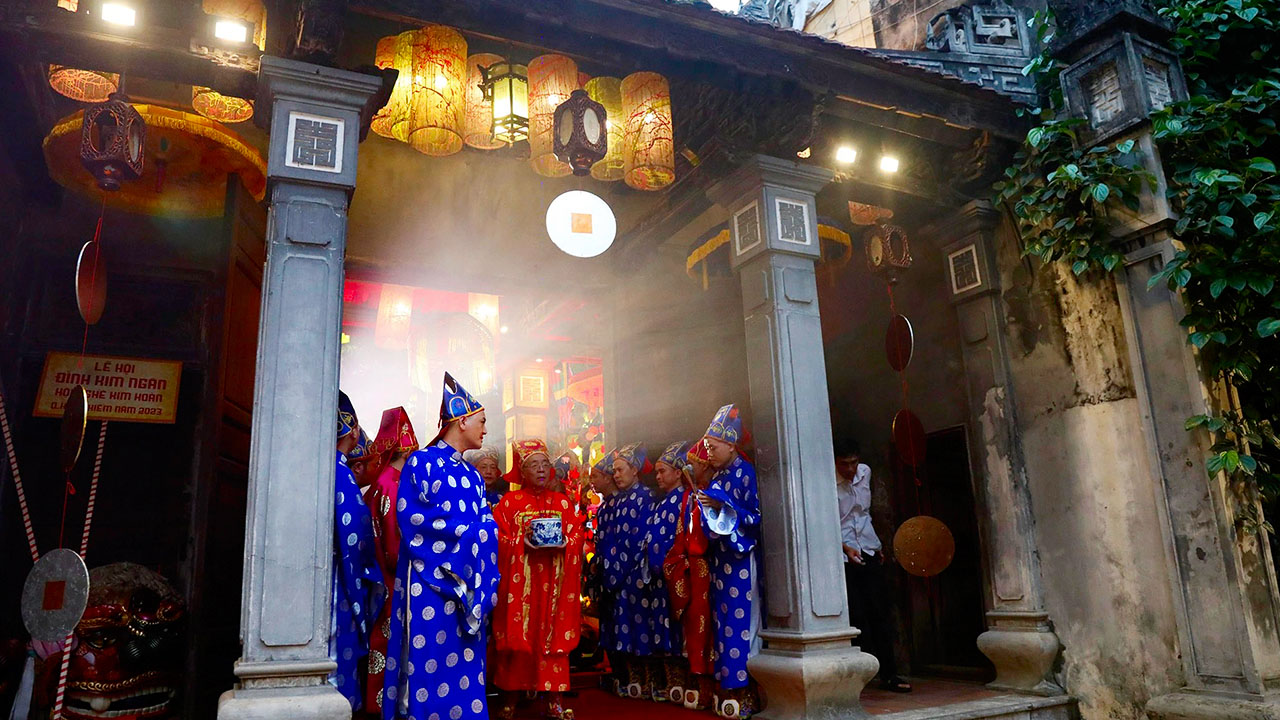
Furthermore, the temple hosts numerous cultural events throughout the year, notably during traditional festivals like Tet (the Lunar New Year) and the Mid-Autumn Festival, attracting both locals and tourists who wish to partake in the celebrations. The ceremonies conducted here provide insight into local customs and the enduring respect for craftsmanship in Vietnamese culture.
In addition to Kim Ngan Temple, visitors will find an array of street art and murals that showcase modern artistic expressions. These artworks juxtapose the traditional backdrop of Hang Bac with contemporary themes, enriching the cultural experience and enhancing the visual character of the street. The interplay of old and new art forms on the walls recalls the history while engaging with the present, making Hang Bac Street a canvas of Hanoi’s evolving identity.
The cultural attractions along Hang Bac Street highlight the street’s prominence not only as a shopping destination but also as a venue for cultural connection and community engagement. They serve as reminders of the importance of preserving and honoring Vietnam’s rich traditions while simultaneously embracing the vibrancy of modern life.
Kim Ngan Temple: A Cultural Landmark
As one of the most significant cultural landmarks along Hang Bac Street, the Kim Ngan Temple represents the spiritual heart of silver craftsmanship in Hanoi. Built during the Late Le Dynasty, this temple has become a place of pilgrimage for artisans and patrons alike. It is dedicated to Hien Vien, the legendary figure credited with founding the silver craft, symbolizing the reverence held for craftsmanship in Vietnamese culture.
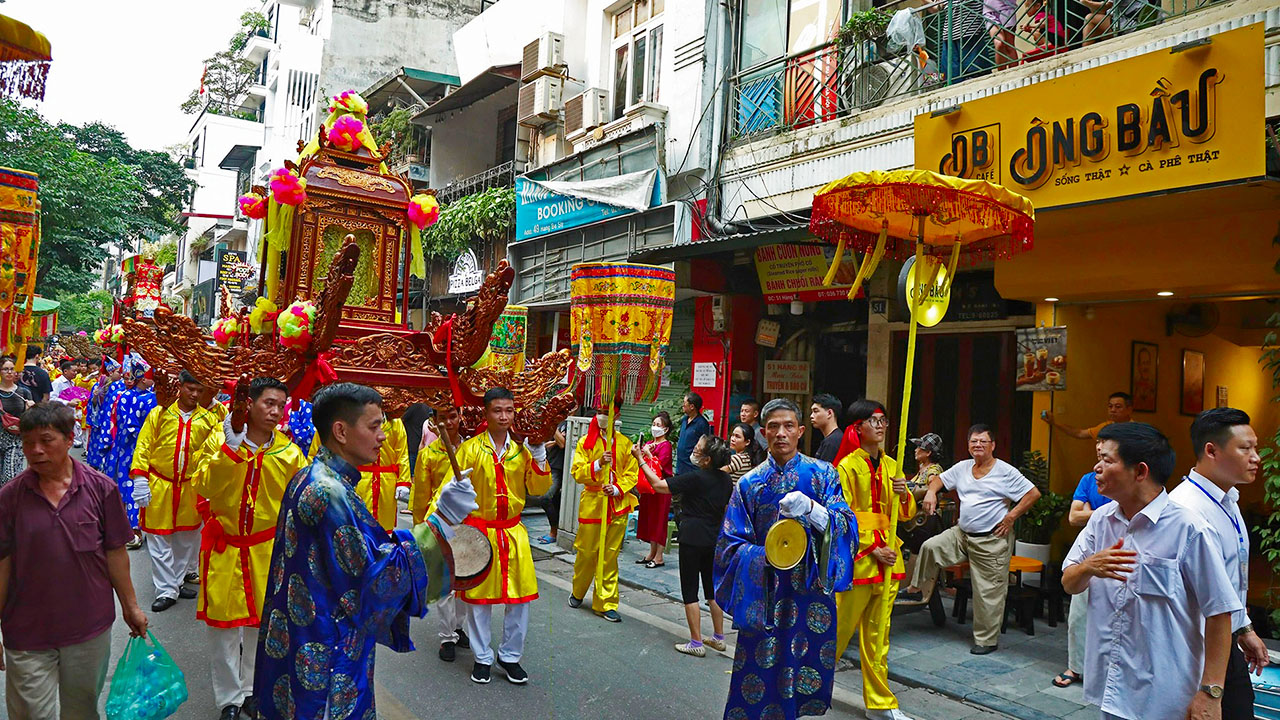
Visitors to the temple will be captivated by its architectural beauty, characterized by intricate wooden carvings depicting various mythical creatures and scenes from Vietnamese folklore. The temple’s layout follows traditional Vietnamese design principles, with a harmonious balance between form and function. Peaceful courtyards dotted with incense burners create an inviting environment, allowing visitors to pause and reflect amidst the bustling surroundings of Hang Bac Street.
Throughout the year, the Kim Ngan Temple serves as a venue for various cultural events and ceremonies. During Tet and other significant holidays, the temple comes alive with vibrant celebrations, where artisans pay their respects and seek blessings for their craft. These events not only reinforce the temple’s spiritual significance but also serve to strengthen community ties among local artisans and residents.
Additionally, the temple plays a vital role in educating visitors about the historical importance of silver craftsmanship. Informational plaques and guided tours help to impart knowledge about the ancient techniques and practices that have been preserved within the community over generations. As a cultural landmark, Kim Ngan Temple embodies the spirit of Hang Bac Street, celebrating the artistry and dedication inherent in the region’s craftsmanship.
Artistry and Craftsmanship in Local Products
In the heart of Hang Bac Street lies a rich tapestry of artistry and craftsmanship that manifests in various local products. While the street is best known for its silver jewelry, the artistry extends to a plethora of unique handicrafts that reflect the traditional Vietnamese culture. Skilled artisans craft not just beautiful pieces of jewelry but also a variety of handmade goods that serve both functional and decorative purposes.
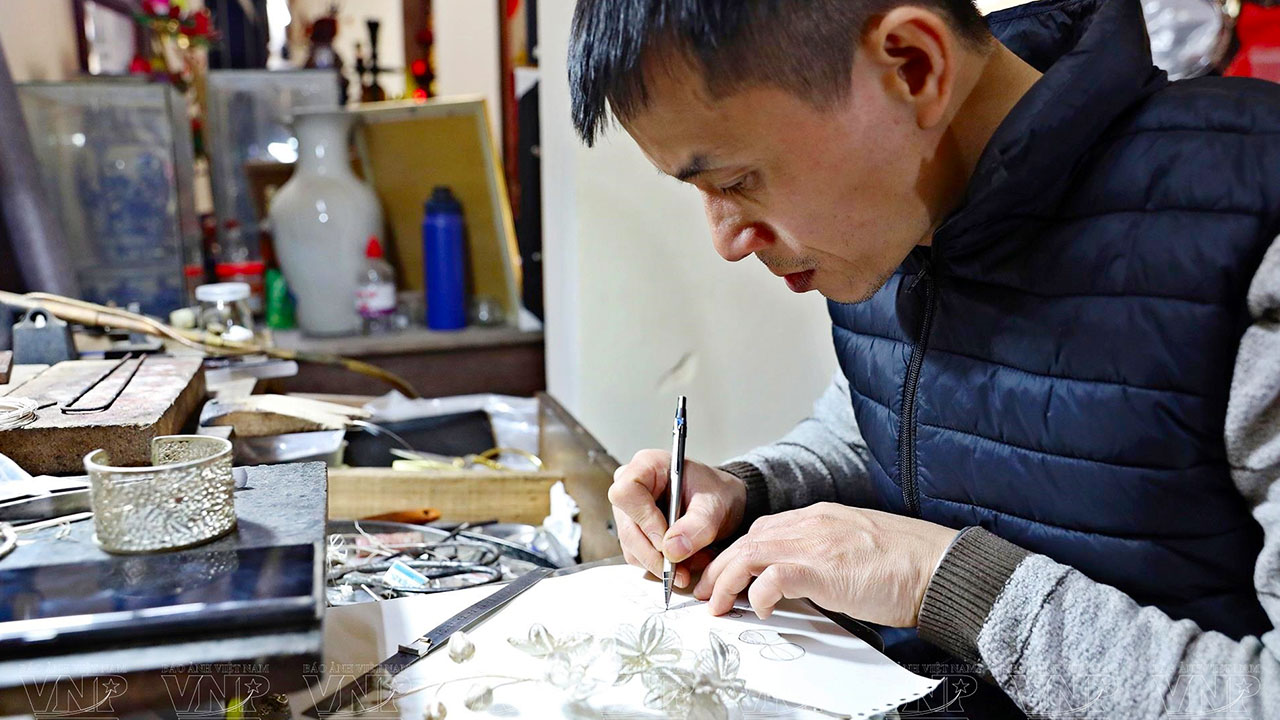
The craftsmanship on Hang Bac Street is characterized by a commitment to quality and tradition. Techniques passed down through generations allow artisans to create products that are both aesthetically pleasing and durable. Examples of local products include handcrafted silver bowls, intricately designed tea sets, and beautifully engraved decorative items. Each product is a testament to the skill and dedication of the artisans who pour their hearts into their work.
Moreover, many shops along Hang Bac offer personalized services, allowing customers to commission customized pieces. This bespoke approach fosters a deeper connection between the artisan and the buyer, transforming the purchasing experience into one of collaboration and creativity. Visitors to Hang Bac Street can even observe artisans at work, a unique opportunity to witness the melding of traditional techniques with contemporary design sensibilities.
The artistry found in local products extends beyond silver. Handcrafted textiles, lacquerware, and wooden carvings are also prevalent, showcasing the diverse skills of Vietnamese artisans. By supporting these local craftspeople, visitors contribute to the preservation of cultural heritage while obtaining unique souvenirs that reflect the beauty and tradition of Vietnam.
Events and Festivals Celebrated at Hang Bac
Hang Bac Street is not only a center for commerce but also a thriving hub of cultural events and festivals throughout the year. The vibrancy of these celebrations underscores the street’s role in preserving and promoting Vietnamese traditions, making it an ideal place for visitors to immerse themselves in the local culture.
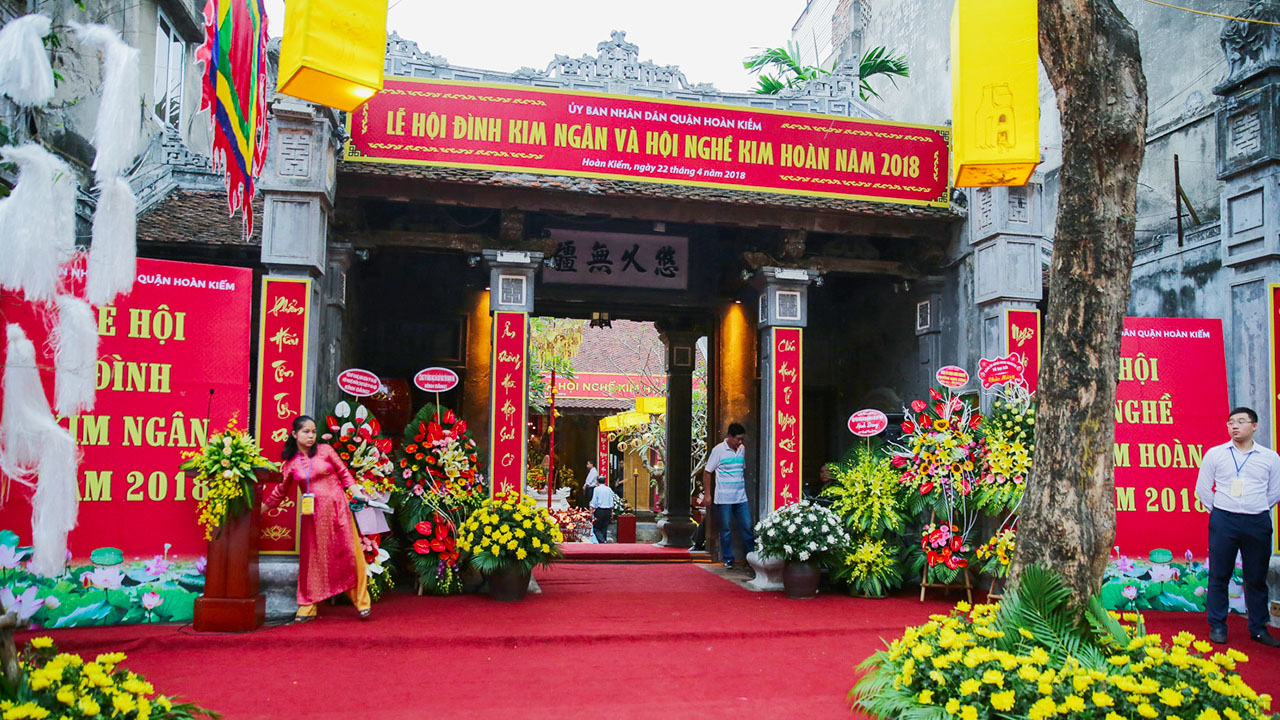
Key festivals celebrated along Hang Bac include the Lunar New Year (Tet), which marks the beginning of the lunar calendar. During this time, the street is transformed with colorful decorations, traditional music, and food stalls selling an array of local delicacies. It is a time when families honor their ancestors, making temple visits and engaging in community activities. The atmosphere is festive, filled with laughter, joy, and plenty of opportunities to experience traditional customs firsthand.
Another major event is the Mid-Autumn Festival, typically held in September or October. This festival is celebrated with vibrant lantern displays and mooncakes, symbolizing unity and togetherness. Visitors can witness various activities, including lion dances and cultural performances that exemplify Vietnamese folklore, enriching their understanding of the nation’s heritage. Shops along Hang Bac Street often showcase special items related to the festival, such as handcrafted lanterns and decorative silver pieces, adding to the festive spirit.
Additionally, the Kim Ngan Temple hosts special ceremonies during these festivals, where local artisans come to pay homage and seek blessings for a prosperous year. The temple becomes a focal point of cultural engagement, drawing both locals and tourists to participate in these vibrant communal celebrations.
Overall, the events and festivals celebrated at Hang Bac Street create a lively atmosphere, inviting visitors to engage deeply with the community while appreciating the rich traditions that define Vietnamese culture.
Culinary Delights Found on Hang Bac Street
While Hang Bac Street is primarily celebrated for its silver craftsmanship, it also hosts an array of culinary delights that add to the richness of the overall experience. Food lovers will find themselves enchanted by the tantalizing flavors and vibrant dishes that characterize Vietnamese cuisine.
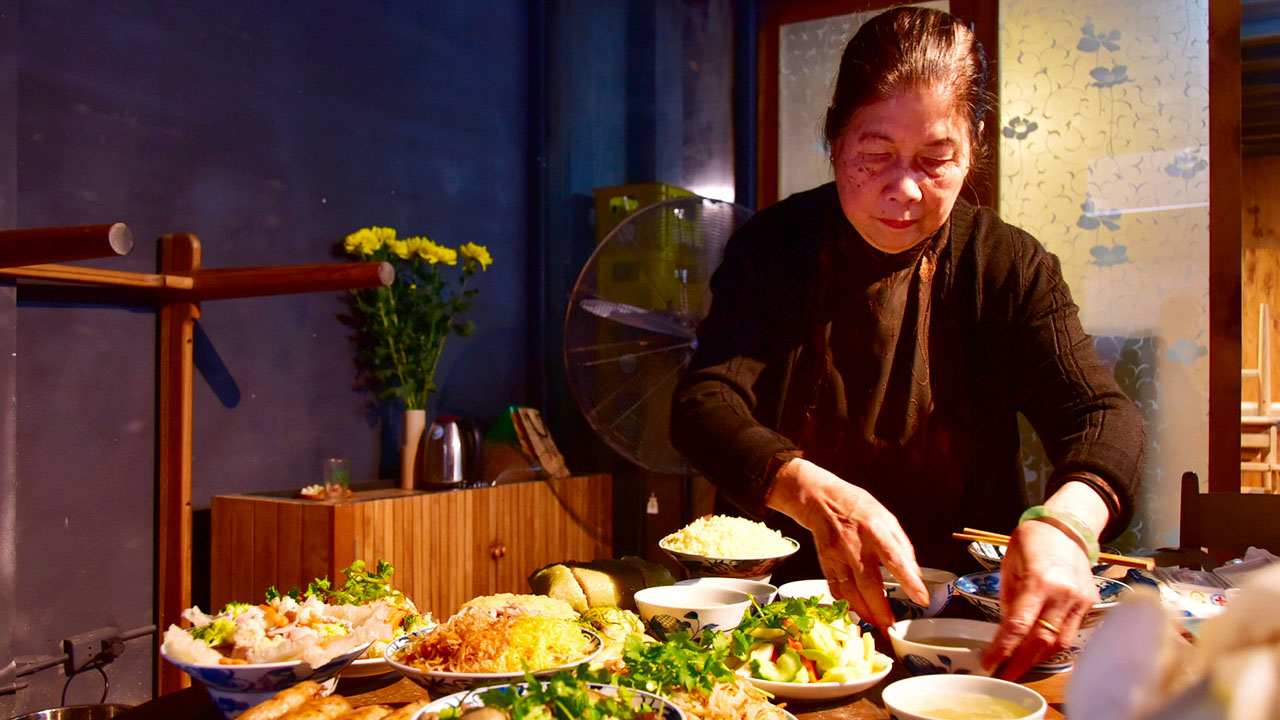
Among the must-try dishes is Bun Cha, a local specialty comprised of grilled pork served alongside rice vermicelli and fresh herbs. The aromatic combination delivers a mouthwatering experience that captures the essence of Vietnamese street food. Vendors lining the street serve generous portions, allowing visitors to indulge in this culinary staple, creating a unique opportunity to savor local flavors.
Additionally, the street offers Sticky Rice with Ice Cream and Sweet Soups, a delightful fusion dish that combines traditional sticky rice with a myriad of local desserts. This creative offering showcases the innovative spirit of Vietnamese cuisine, appealing to those seeking something truly unique. Street vendors often set up booths offering these delectable treats, creating a lively and inviting atmosphere that complements the vibrant character of Hang Bac.
For those wanting to experience local snacks, the street also boasts an assortment of treats such as fresh spring rolls, banh trang, and various sweet treats made from tropical fruits and coconut. Each option encapsulates the diverse culinary landscape of Hanoi, allowing visitors to enjoy a casual yet flavorful dining experience.
Exploring the food scene on Hang Bac Street provides visitors with an opportunity to taste the rich culinary heritage that coexists with the historical and artistic offerings of the area. The combination of silver craftsmanship and vibrant dining creates a comprehensive cultural experience that truly defines Hang Bac as a must-visit destination.
Accommodation Options Near Hang Bac Street
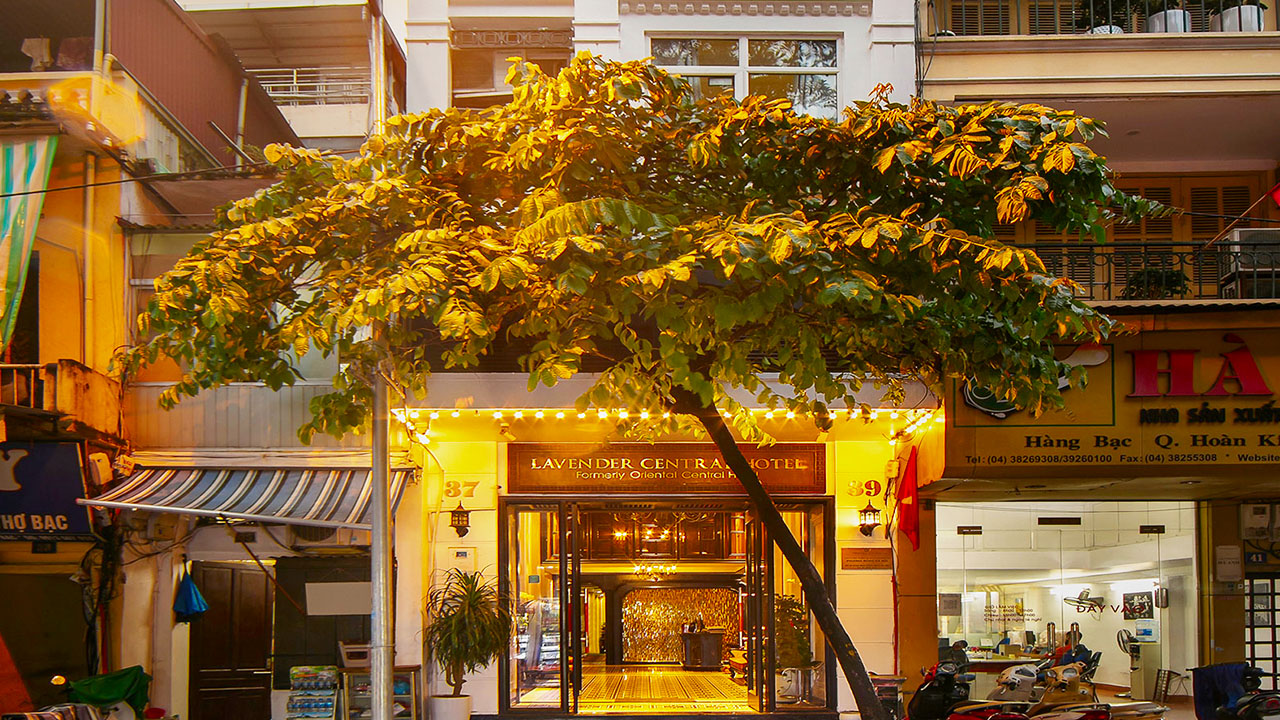
Having explored the wonders of Hang Bac Street, visitors will naturally seek accommodation options within the vicinity to immerse themselves fully in the vibrant atmosphere. Fortunately, the area offers various lodging choices, catering to different budgets and preferences.
- Hanoi Legacy Hotel – Hang Bac: A contemporary establishment located just steps away from the street, this 3.5-star hotel combines modern amenities with the charm of traditional Vietnamese décor. Visitors can enjoy a comfortable stay while being close to local attractions and markets, perfect for those eager to explore.
- Ha Noi Paradise Hotel & Spa: Situated directly on Hang Bac Street, this hotel offers convenient access to several shopping landmarks. Its serene environment makes it a desirable choice for those seeking relaxation after a day of exploration. The on-site spa provides visitors with an opportunity to unwind and rejuvenate.
- Bespoke Trendy Hotel Hanoi: Nestled in the Hoan Kiem district, this boutique hotel is just a short walk from Hang Bac Street. With stylish accommodations and a reputation for impeccable service, it is favored by couples and families alike. The hotel’s amenities make it a comfortable retreat in the heart of the Old Quarter.
Choosing accommodation near Hang Bac Street ensures that visitors can easily immerse themselves in the bustling atmosphere while enjoying easy access to cultural attractions, shopping opportunities, and culinary delights. By staying close to this historic street, guests can take full advantage of everything that Hanoi has to offer.
Shopping Experience on Hang Bac Street

Shopping on Hang Bac Street is a captivating experience that intertwines cultural heritage with the vibrant pulse of modern commerce. Renowned for its rich history in silver craftsmanship, the street offers visitors an extensive selection of handmade jewelry and unique handicrafts, making it a must-visit destination for those seeking high-quality souvenirs.
Unique Souvenirs and Handicrafts
In addition to silver jewelry, Hang Bac Street boasts a variety of local products that reflect the craftsmanship and artistry of the region. Shoppers will find the following types of unique souvenirs and handicrafts:
- Handcrafted Silver Jewelry: Various shops selling exquisite rings, necklaces, and earrings. Items often feature traditional designs and modern aesthetics, appealing to a wide range of tastes.
- Lacquerware: Beautifully crafted lacquer items such as vases, trays, and coasters, showcasing the intricate techniques used in this traditional Vietnamese craft. They make excellent gifts and decorative pieces.
- Vietnamese Silk Products: From elegant scarves to stunning wall hangings, silk products available along Hang Bac highlight Vietnam’s renowned silk-making tradition.
- Bamboo Crafts: Unique bamboo products like woven baskets and home decor items highlight the natural beauty of this sustainable material while supporting local artisans.
Exploring these shops allows visitors to support local craftsmanship while taking home a piece of Vietnam’s rich heritage. Each item embodies the care and dedication of its maker, ensuring that visitors leave with unique mementos of their trip.
Comparison of Prices in Local Shops
When it comes to pricing, there’s a fascinating variety within the offerings at Hang Bac Street. Prices can fluctuate based on quality and design intricacy. Here’s a brief overview of typical price ranges:
| Item Type | Price Range (VNĐ) |
|---|---|
| Simple silver rings or bracelets | Starting from 200,000 VND (~$8.50) |
| Intricately designed necklaces or larger pieces | 500,000 VND to 2,000,000 VND (~$22 to $90) |
| Custom-made designs | Prices vary based on complexity |
| Traditional handicrafts (silk, lacquerware) | Starting from 150,000 VND (~$6.50) |
While prices may initially seem fixed, many shops are open to negotiation, especially among smaller, family-owned enterprises. Engaging in friendly bargaining can lead to exceptional deals and fosters a culturally enriching experience as visitors interact directly with local merchants.
Tips for Successful Bargaining
To maximize your shopping experience on Hang Bac Street, here are some effective tips for successful bargaining:
- Start Low: Begin negotiations at around 50-70% of the initial asking price. This practice helps in establishing a comfortable space for negotiations.
- Be Polite and Chemically Friendly: The art of bargaining in Vietnam often involves a cheerful demeanor. A smile can go a long way in achieving a favorable deal.
- Show Interest: If there’s a particular item you’re keen on, express your interest but make it clear the price is a concern; this may encourage the seller to offer a discount.
- Walk Away: Demonstrating that you are willing to walk away can prompt the seller to reconsider their price, leading to a potential deal.
- Know the Value: Having background knowledge about prices can enhance your bargaining position and help you avoid being overcharged.
- Engage in the Process: Treat the negotiation as a cultural exchange rather than a confrontation, allowing for a more genuine interaction with local vendors.
By employing these tips, visitors can enhance their shopping experience while enjoying the vibrant atmosphere of Hang Bac Street, ensuring they leave with valued items that reflect the artistry and culture of Hanoi.
Accessibility and Transportation
Navigating Hang Bac Street is generally straightforward due to its central location in the heart of Hanoi’s Old Quarter. The area is well-served by various modes of transportation, making it convenient for both locals and tourists alike. Here’s a closer look at the accessibility options available:
Getting to Hang Bac Street from Major Landmarks
Hang Bac Street is easily accessible from several notable landmarks in Hanoi:
- From Hoan Kiem Lake:
- Walking: Just a 10-15 minute stroll, visitors can enjoy the scenic sights along the way.
- Taxi or Motorbike: A short ride costs approximately 15,000 to 30,000 VND (around $0.60 to $1.20), offering an easy option for those pressed for time.
- From Hanoi Opera House:
- Public Transport: Buses frequently run in the area, offering a quick way to reach Hang Bac.
- Walking: The scenic 20-minute walk allows visitors to navigate other parts of the city.
- From the Vietnam Museum of Ethnology:
- Taxi or Motorbike: About 30 minutes away, costing around 80,000 to 120,000 VND ($3 to $5.20).
- Bus: Buses are available, but travel times may vary.
Navigating the Old Quarter on Foot
Walking is one of the best ways to explore the Old Quarter’s rich heritage and lively atmosphere. Here are some key tips:
- Plan Your Route: The Old Quarter consists of numerous narrow, bustling streets having a map or using navigation apps can enhance the walking experience.
- Be Aware of Traffic: The streets can be crowded with motorcycles and pedestrians; remaining vigilant is crucial, especially at busy intersections.
- Guided Tours: Many tourists opt for guided walking tours that provide historical context and insights into local culture, making the experience more enriching.
Public Transport Options for Tourists

Hanoi offers robust public transport options:
- Buses: The public bus system is affordable, with tickets generally costing around 30,000 VND (approximately $1.30). Make sure to use a translation app or have a bilingual friend help with routes as information may not always be in English.
- Taxi Services: Reliable taxis are abundant, and ride-hailing apps like Grab are popular among locals and visitors. This convenience adds a layer of comfort and flexibility to your travel.
- Cyclo Rides: For a uniquely Vietnamese experience, tourists can opt for cyclos, which provide a leisurely way to see the sights.
- Motorbike Rentals: Adventurous travelers may select motorbike rentals for freedom of movement, but navigating the bustling streets requires confidence and awareness of local traffic laws.
In summary, visiting Hang Bac Street entails a mix of cultural immersion and sensory experiences, blending robust silver craftsmanship, a rich culinary scene, and a lively shopping environment. The street’s remarkable accessibility ensures visitors can explore at their own pace, soaking in the vibrant energy of what is not only a site of commerce but also a lasting testament to Hanoi’s rich heritage.
Conclusion
Hang Bac Street embodies a unique nexus of history, culture, and contemporary charm situated within Hanoi’s Old Quarter. Its celebrated significance in silver craftsmanship highlights the dedication of artisans who have thrived in the community for centuries. Visitors can explore an array of attractions, including intriguing shops, the revered Kim Ngan Temple, and a vibrant culinary landscape that entices the senses. As one meanders through the lively street, each shop, delicacy, and cultural event creates an experience that resonates deeply with the heart of Vietnam. By engaging with the craftsmanship and embracing the local traditions, Hang Bac Street offers a mesmerizing blend of the past and present, firmly establishing itself as a must-visit destination for anyone journeying through Hanoi.


